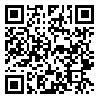Volume 22, Issue 3 (9-2022)
ijdld 2022, 22(3): 155-164 |
Back to browse issues page
Download citation:
BibTeX | RIS | EndNote | Medlars | ProCite | Reference Manager | RefWorks
Send citation to:



BibTeX | RIS | EndNote | Medlars | ProCite | Reference Manager | RefWorks
Send citation to:
Sadeghi F, Kazemzadeh Y, Banaei far A. The Effect of Eight Weeks of Resistance Training Under Hypoxia on Metabolic Parameters and Muscle Tissue Regeneration in Male Wistar Rats with Type 2 Diabetes. ijdld 2022; 22 (3) :155-164
URL: http://ijdld.tums.ac.ir/article-1-6139-en.html
URL: http://ijdld.tums.ac.ir/article-1-6139-en.html
1- Department of Sport Physiology, Faculty of Physical Education, Islamic Azad University, North Tehran Branch, Tehran, Iran
2- Department of Sport Physiology, Faculty of Physical Education, Islamic Azad University, North Tehran Branch, Tehran, Iran ,yaser.kazemzadeh@yahoo.com
2- Department of Sport Physiology, Faculty of Physical Education, Islamic Azad University, North Tehran Branch, Tehran, Iran ,
Abstract: (1124 Views)
Background: Diabetic myopathy is one of the major problems in people with type2 diabetes that knowing its mechanisms can be helpful in controlling and preventing this disease. PAX7 and PGC-1α are two proteins involved in the renewal and metabolism of carbohydrates in skeletal muscle. The aim of this study was to evaluate the effect of 8weeks of resistance training under hypoxia on the content of PAX7 and PGC-1α proteins in the horseshoe muscle of type 2 diabetic rats.
Methods: In this study, 40 male Wistar rats, 10weeks after induction of type2 diabetes, were divided into five groups: healthy control (HC), diabetic control (DC), resistance training (RT), and resistance training in hypoxia (RT-HPX) and hypoxia group (HPX) were divided. Resistance exercises were performed for 8 weeks, 5 sessions per week, in the groups of resistance training and resistance training in hypoxia. The intensity of the exercises started from 30% of the weight of the rats initial and reached 100% of their weight until the end of the training. Resistance training in hypoxia. Hypoxia tent with14.4%oxygen was used to create hypoxia. 48hours after training, tissue samples were taken from horseshoe muscle and evaluated to measure the concentration of PAX7 and PGC-1α proteins.
Results: The results showed that there is a significant difference (P=0.0001) between the research groups in both PAX7 and PGC-1α proteins. Induction of diabetes led to a significant decrease in PAX7, but the hypoxia resistance training group was not significantly different from the healthy control group (P=0.451). PGC1-α protein levels were also significantly decreased in the diabetes induction group compared to the control group (P=0.01), but training in hypoxia increased its levels to more than the healthy control group (P=0.0001).
Conclusion: Hypoxia, resistance training and combination of resistance training in hypoxia increased the amounts of PAX7 and PGC-1α proteins. Therefore, resistance training and temporary and inactive hypoxia exposure can be considered as a suggested solution to improve the indicators related to type2 diabetes in humans.
Methods: In this study, 40 male Wistar rats, 10weeks after induction of type2 diabetes, were divided into five groups: healthy control (HC), diabetic control (DC), resistance training (RT), and resistance training in hypoxia (RT-HPX) and hypoxia group (HPX) were divided. Resistance exercises were performed for 8 weeks, 5 sessions per week, in the groups of resistance training and resistance training in hypoxia. The intensity of the exercises started from 30% of the weight of the rats initial and reached 100% of their weight until the end of the training. Resistance training in hypoxia. Hypoxia tent with14.4%oxygen was used to create hypoxia. 48hours after training, tissue samples were taken from horseshoe muscle and evaluated to measure the concentration of PAX7 and PGC-1α proteins.
Results: The results showed that there is a significant difference (P=0.0001) between the research groups in both PAX7 and PGC-1α proteins. Induction of diabetes led to a significant decrease in PAX7, but the hypoxia resistance training group was not significantly different from the healthy control group (P=0.451). PGC1-α protein levels were also significantly decreased in the diabetes induction group compared to the control group (P=0.01), but training in hypoxia increased its levels to more than the healthy control group (P=0.0001).
Conclusion: Hypoxia, resistance training and combination of resistance training in hypoxia increased the amounts of PAX7 and PGC-1α proteins. Therefore, resistance training and temporary and inactive hypoxia exposure can be considered as a suggested solution to improve the indicators related to type2 diabetes in humans.
Type of Study: Research |
Subject:
Special
Received: 2022/04/8 | Accepted: 2022/07/26 | Published: 2022/09/1
Received: 2022/04/8 | Accepted: 2022/07/26 | Published: 2022/09/1
Send email to the article author
| Rights and permissions | |
 |
This work is licensed under a Creative Commons Attribution-NonCommercial 4.0 International License. |






